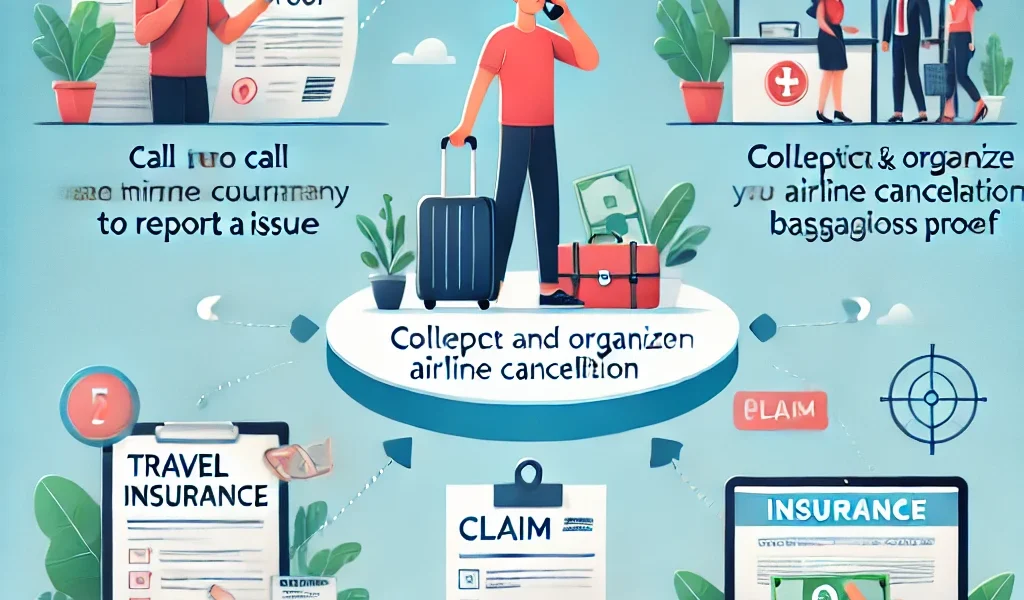Introduction
Traveling is an exciting adventure, but unforeseen events like medical emergencies, trip cancellations, lost luggage, or flight delays can disrupt your plans. Travel insurance acts as a safety net, covering unexpected expenses. However, many travelers struggle with filing a claim due to a lack of awareness about the process. This comprehensive guide will help you understand the step-by-step procedure to file a travel insurance claim successfully and hassle-free.
Step 1: Understand Your Travel Insurance Policy
Before filing a claim, it is crucial to read and understand your travel insurance policy carefully. Pay attention to the following:
- Coverage Details: What is covered? (e.g., medical emergencies, trip cancellations, baggage loss, flight delays, etc.)
- Exclusions: Situations that are not covered under the policy.
- Claim Limits: Maximum amount payable for different types of claims.
- Claim Timeframe: Deadline for filing claims after the incident.
- Required Documents: Proofs and paperwork needed to support your claim.
By understanding these key points, you can avoid claim rejections due to missing or incorrect information.
Step 2: Notify Your Insurance Provider Immediately
The sooner you inform your insurance company about the incident, the better. Most providers have a dedicated claim helpline, website, or mobile app for easy reporting. Here’s how to proceed:
- Contact customer support via phone, email, or the insurer’s online portal.
- Provide basic details such as your policy number, type of incident, date, and location.
- Follow their guidance on what documents and steps are required to proceed.
- Get a claim reference number to track the progress of your claim.
Prompt reporting helps expedite claim processing and prevents unnecessary delays.
Step 3: Gather Required Documents
The success of your claim largely depends on submitting the correct documentation. Here’s a breakdown based on different claim types:
1. Medical Claims
- Doctor’s report and medical diagnosis
- Hospital bills and payment receipts
- Prescription details and pharmacy bills
- Emergency medical evacuation documents (if applicable)
2. Trip Cancellation or Interruption
- Proof of reason for cancellation (e.g., medical certificate, airline notification, or government travel restriction notice)
- Non-refundable expenses receipts
- Proof of accommodation and flight bookings
3. Lost or Delayed Baggage
- Airline’s Property Irregularity Report (PIR)
- Baggage delay confirmation from the airline
- List of lost items and their approximate value
- Purchase receipts of essential items bought due to delay
4. Flight Delays or Missed Connections
- Flight delay confirmation from the airline
- Boarding passes and tickets
- Additional expenses receipts (e.g., meals, accommodation, etc.)
Submitting clear, complete, and accurate documents significantly improves claim approval chances.
Step 4: Submit Your Claim Form
Most insurers provide an online or offline claim submission process. Follow these steps:
- Download the claim form from the insurer’s website or request it via email.
- Fill out the form completely, ensuring all details are accurate and match the supporting documents.
- Attach required documents as per the insurer’s checklist.
- Double-check for errors before submission.
- Submit through the designated channel, such as email, online portal, or physical mail.
Keep a copy of your submission for reference.
Step 5: Follow Up on Your Claim Status
After submitting your claim, regularly check its status:
- Use the claim reference number for tracking.
- Contact customer support if there are delays or additional document requests.
- Be patient, as claim processing may take days to weeks, depending on complexity.
- If your claim is approved, the reimbursement will be credited to your provided bank account or via cheque.
Step 6: What to Do If Your Claim is Denied?
If your claim gets rejected, don’t panic. Follow these steps:
- Review the rejection letter to understand the reason for denial.
- Check your policy terms to see if the reason aligns with the coverage exclusions.
- Contact your insurer for further clarification and ask if additional documents can support your case.
- File an appeal if you believe the denial is incorrect. Provide any missing documents or additional proof.
- Seek external assistance (e.g., insurance ombudsman or legal advisor) if your appeal is unfairly rejected.
Tips for a Hassle-Free Travel Insurance Claim
- Always keep copies of receipts, reports, and communications related to your trip.
- Be honest and transparent when providing claim details.
- Follow the insurer’s instructions carefully to avoid unnecessary back-and-forths.
- File your claim within the deadline mentioned in your policy.
- Stay proactive and follow up on pending claims to ensure timely resolution.
Conclusion
Filing a travel insurance claim doesn’t have to be a daunting process. By understanding your policy, promptly reporting incidents, gathering the necessary documents, and following the insurer’s procedures, you can maximize your chances of a successful claim. Always stay informed and organized to ensure a smooth and stress-free reimbursement process. Happy and safe travels!




